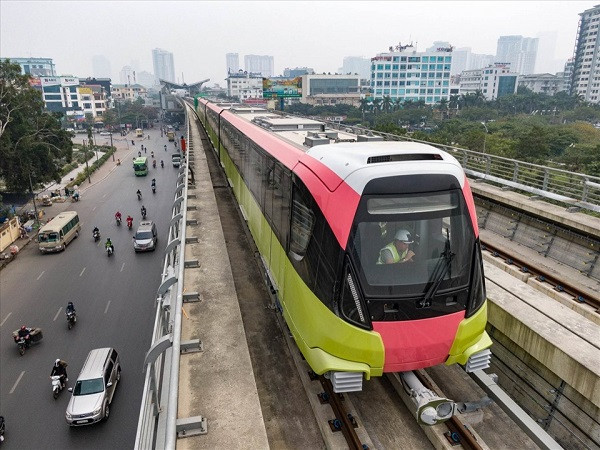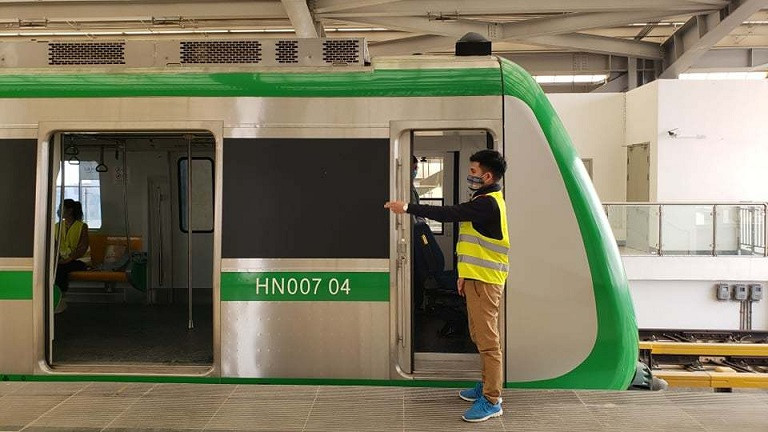This is a lesson learned for the implementation of future projects.

According to the Ministry of Transport, Hanoi and Ho Chi Minh City have six urban railway line projects. Hanoi has four routes, including Cat Linh - Ha Dong, Nhon - Hanoi station, Nam Thang Long - Tran Hung Dao, Yen Vien - Ngoc Hoi and Ho Chi Minh City has two routes, including Ben Thanh - Suoi Tien and Ben Thanh - Tham Luong. These projects are in the same situation of being implemented slowly while the investment increases.
The Nhon-Hanoi station urban railway project started in 2010 and it has missed deadlines several times. As a result, the total investment increased from VND21,912 billion to VND32,910 billion, up by more than VND 10,998 billion from the initial capital.
In Ho Chi Minh City, the Ben Thanh - Suoi Tien project started in 2012 and its deadline has been extended many times. The goal of operation in 2022 failed as progress has only reached 91%. The capital also increased from VND 17,387 billion to VND 43,757 billion, up by VND 26,370 billion.
The Yen Vien - Ngoc Hoi urban railway project in Hanoi was approved by the Ministry of Transport in 2008, and was expected to be completed in 2017, but the construction has not started. The investment capital is estimated to increase from VND 19,046 billion to VND 65,175 billion.
The Nam Thang Long - Tran Hung Dao urban railway project in Hanoi was approved in 2008, and scheduled for completion in 2015, but it has not yet started. The total investment is estimated to increase from VND 19,555 billion at the beginning to VND 35,679 billion.
The Ben Thanh - Tham Luong urban railway project in HCM City was approved in 2010, and planned for completion in 2018, but has been delayed to 2026. The total investment is expected to increase from VND 26,116 billion to VND 47,890 billion.
Slow progress

There are many reasons for the slow progress of urban railway projects, but slow site clearance is the main one.
For the Nhon - Hanoi station project, because of problems with site clearance, the contractor could not do their job. For this reason, the contractor asked the investor for compensation of US$114 million.
The Cat Linh - Ha Dong urban railway project also had to adjust the schedule and design because of a lack of space to build a two-story station. The investor had to adjust the design of the station from 2 to 3 floors.
In addition, the design of some urban railway projects did not fit with the actual planned area, which led to many difficulties in implementation.
For example, the Nhon - Hanoi station railway project (12.5 km long) has 4km underground route. However, the underground passage is entangled with the foundation of construction works.
Deputy Transport Minister Nguyen Ngoc Dong said that for future urban railway projects, it is necessary to separate site clearance into a single project, which must be implemented first. Once site clearance is complete, project implementation will be ensured and help minimize the increase of capital investment.
Mastering technology, understanding technical standards is also a must.
Urban railway technical standards are very new to Vietnam and the current projects are all invested in by foreign loans. Therefore, when signing loan agreements, it is necessary to understand the technical nature of the project to avoid technical problems during the implementation process, causing higher costs and longer time of implementation.
It is necessary to develop standards for urban railways to apply for current and also future projects.
In addition, what needs to be done right now is to build a team of technical staff with expertise and knowledge in urban railway management.
Vu Diep